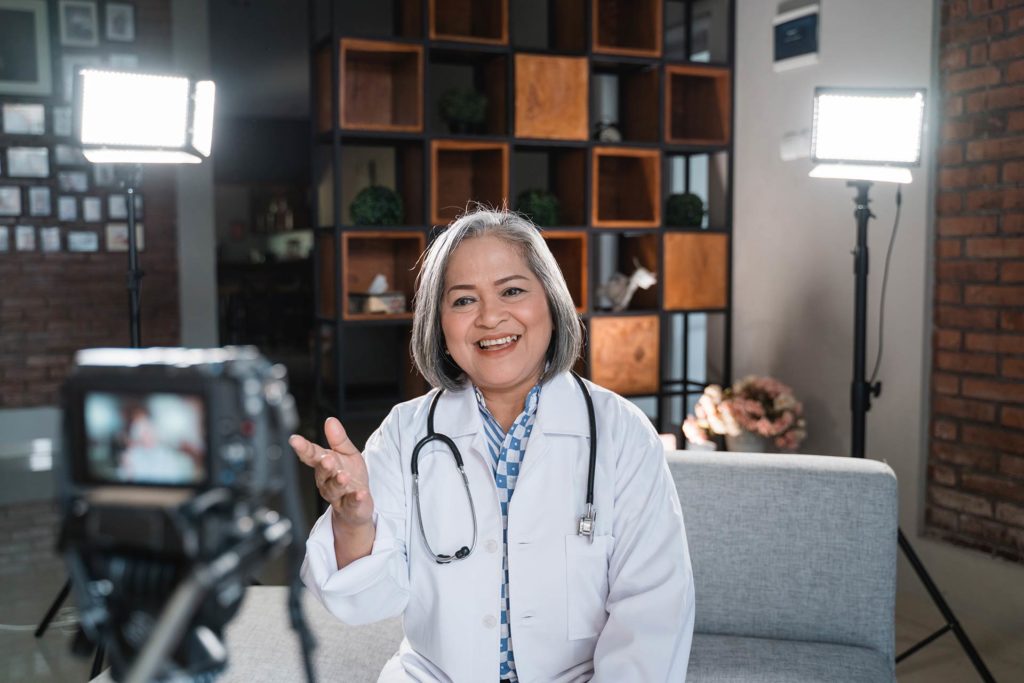The worldwide healthcare industry has been irrevocably changed by the COVID-19 pandemic and healthcare communications have changed along with it; but no one could have predicted at the start of COVID-19 that we’d be struggling with this continuing crisis today. The first cases of the Pandemic were reported in the U.S. in January of 2020. Now almost two years later, what have we learned? How do we continue to deal with ongoing change in healthcare communications?
Brianne Miller, Senior Counselor at Landis Communications, Inc. (LCI) offers her take and 10 helpful Tips!
Constant and Continuing Change is a Given
Predictions of “when COVID-19 ends” have morphed into “how the Pandemic will evolve.” There’s no in-between. That’s a good lesson for any communications team, especially those that will need to shift from a milestones/launch mentality to on-going integrated programming. It’s vital to get comfortable in a new mindset that measures metrics all along vs. “at the end of the program.” COVID-19 has taught us that programs evolve and sometimes there’s no end in sight.
Meet Your Audience Where They Are
In the blink of an eye, how we work changed overnight and became the new normal. While you may previously have expected emails and phone calls to slow down by 5:30 p.m., the 24/7 clock is the new reality. The appetite for news doesn’t follow a now- antiquated nine-to-five work week. If a journalist can count on you to produce vital information for a digital piece that posts at 9:00 p.m., you’re a reliable source.
Set Boundaries
I fell into a constant-work cycle when my office no longer provided a framework to the day. If a client or colleague calls at 7:30 p.m. with a task that provides value and has to be completed by 8:00 a.m., fine. If they call/text/email with something that could have waited until the morning, protect your valuable home/family time.
10 Tips for the Next Phase of Healthcare Communications:
- Resource up. Whomever you are, you’re understaffed. Resources now need to be fluid and flexible. The rise of remote work and freelancer communities creates a pool of on-demand help. Find your matches. Marshall your troops. Dip into the pool as needed.
- Don’t overcommunicate. COVID-19 information fatigue is high. Guidelines change weekly and confusion is the only constant. Communicate with complete and compact information. Create a resource for breaking news that’s user-friendly and timely. Google searches of COVID-19 fact sheets for three U.S. markets yield out of date information. Don’t be that confusing brand or service.
- Proactively highlight non-pandemic news. Healthcare continues during this worldwide crisis. Maintain outreach to specific condition-related communities, celebrate new hires, launch the product. Create a digital footprint for your organization during and post-Pandemic. It may not be business as usual, but don’t ignore business at hand.
- Embrace paid + placed. A fractured media landscape necessitates a paid-plus-placed model, especially in healthcare trades. Support businesses that report your news. You become a partner in everyone’s success.
- Test and learn. This is a pivotal time/opportunity to test new communication methods with little downside. Experiment! Beta test an app. Get more active on a social network. Create video content with a point of view. Media train and test new spokespersons. Embrace storytelling. Put time/effort behind the methods that perform. Forget the others. Exit COVID-19 with new tools in your belt.
- ROI/KPI/LMNOP … whatever acronym you use, use that measurement method often. You can’t assess the effectiveness of any effort without understanding if it worked. Start with goals, find a metric to measure against them and report. Even if results were dismal, you learned something.
- Support your teams. The workforce has had to embrace, and sometimes follow, new work styles and methods. What once was a quick five-minute chat in the break room is a full screen of back and forth on Slack. Annoying? Maybe. Everyone struggles occasionally. Compassion is key. Celebrate often!
- Find the story. COVID-19 unearthed stories of amazing courage and resilience, especially among frontline workers. Any brand/organization with people has stories. Find them and share appropriately with your audiences. There’s never been a better time to present an organization as a collective of smart and thoughtful people. The rise of “good news journalism” presents another opportunity for media outreach.
- Redefine healthCARE. What does your client do for folks that improves their lives? If you’re struggling to answer that question that’s your first red flag. Create something that benefits all, whether as simple as a “branded” music playlist for chemo patients or a partnership with a food co-op to service the underserved. If a corporate social responsibility program doesn’t exist, start one now.
- Constantly generate ideas. I have a folder on my computer called “harebrained schemes.” If I think of some crazy pitch or stunt or partnership, I put it in there. When I’m struggling to come up with creative concepts, I open those files and invariably pull out a plum! It’s the pandemic version of “no such thing as a bad idea in a brainstorm meeting.” Encourage others to think creatively.

As Senior Public Relations Counselor to LCI, Brianne Murphy Miller is responsible for strategic counsel to a myriad of LCI clients, as well as overseeing all sales, marketing and business development needs for the agency, https://www.landispr.com/about/team/brianne-murphy-miller/

